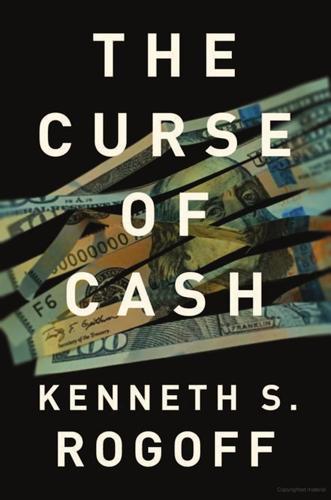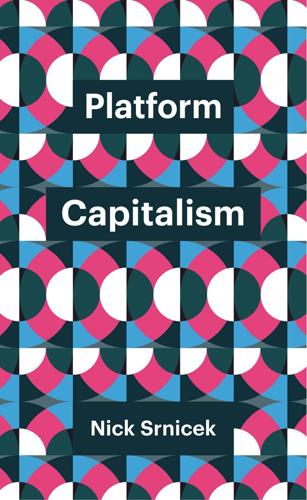unconventional monetary instruments
description: financial tools used by central banks beyond standard policy measures, like quantitative easing
3 results

The Curse of Cash
by
Kenneth S Rogoff
Published 29 Aug 2016
A few empirical papers argue that these unorthodox central bank policies have accomplished more than meets the eye.5 Nevertheless, the stunning challenges that the Bank of Japan and the ECB have faced in lifting inflationary expectations suggest that unconventional policies are vastly less effective than plain vanilla interest rate policy might have been, if unfettered negative rate policy were fully possible—that is, if all the institutional, legal, and other barriers were cleared away, as we discuss in chapters 10 and 11. Even at the Federal Reserve, which has produced many of the chirpier appraisals of unconventional monetary instruments, nobody really wants to have to rely on them again, not least because they involve risks that are difficult to measure or understand. If the zero bound led only to uncertainty about the effects of monetary policy, it would be bad enough, but it has clouded the entire debate on macroeconomic stabilization policy.
…
See also Eurozone; individual country names European Central Bank (ECB): consumer cash holdings, efforts to determine, 52; discount rate cuts in response to recent crises, 131–32; euro purchase, program for, 245n20; inflationary expectations, challenges faced in lifting, 124; inflation control, mandate for, 120, 193; legal domestic economy, demand for euros in, 236n23; negative interest rates, experience with, 1; nominal policy interest rates, 2000–2015, 130; profits from printing money, 81; quantitative easing by, 135–36; terrorist financing, concerns regarding, 77 Eurozone: buying back paper currency, cost in GDP of, 217; cash, restrictions on the use of, 64; cash circulating, amount of, 32–34; cash used for different kinds of purchases, percentage of by country, 55; currency/GDP ratio, 1995–2015, 34; currency per capita, 38, 40; discount rate cuts in response to recent crises, 131–32; financial stability concerns, negative interest rates and, 178; foreign holdings of currency, 45–47; large-denomination notes of, 31; member countries of, 235n5; negative interest rates, functioning of swap markets and, 163; negative interest rates in, 5, 123; nominal policy interest rates, 2000–2015, 130; paper currency, profits from monopoly on, 217; revenue as a percentage of GDP, 2006–2015, 83–84; underground economy, estimated size of, 63 Farhi, Emmanuel, 246n26, 250n18, 251n3 Faust (Goethe), 15, 21, 24 Federal Reserve Bank/Board/System: abolishing, call for, 191; consumer cash holdings, efforts to determine, 49–51; creation of, 192; discount rate cuts in response to recent crises, 131–32; flexible inflation targeting by, 193; foreign holdings of currency, estimates of, 44–45; inflation and, 28; inflation target, choice of, 153; inflation targeting adopted by, 232; Nixon’s reelection and, 189; nominal policy interest rates, 2000–2015, 130; quantitative easing by, 135–36, 140–42; security in the event of a nuclear attack, 113–14; ten-year treasury inflation-indexed securities, constant maturity, 142; unconventional monetary instruments, chirpy appraisals of, 124; welfare of other countries not considered by, 207; zero bound, work on, 132–34 Feige, Edgar L., 238n6 Feldstein, Martin, 156–57 Ferengi currency (Star Trek), 216, 254n9 Ferguson, Niall, 21 fiat currency: basis of value for, 8; contemporary, 30; Mongol currency as, 23; Wallace’s paradox of, 105, 225–26 Financial Action Task Force, 75 financial repression, 186–87 Finland, 71 fiscal policy: theory of at the zero bound, 249n12; the zero bound constraint and opportunistic, 154–56 Fiscal Theory of the Price Level, 227 Fischer, Stanley, 149 Fisher, Irving, 5, 86, 164 Fitzgerald, F.

Platform Capitalism
by
Nick Srnicek
Published 22 Dec 2016
Since fiscal stimulus is politically unpalatable, governments have been left with only one mechanism for reviving their sluggish economies: monetary policy. The result has been a series of extraordinary and unprecedented central bank interventions. We have already noted a continuation of low interest rate policies. But, stuck at the zero lower bound, policymakers have been forced to turn toward more unconventional monetary instruments.24 The most important of these has been ‘quantitative easing’: the creation of money by the central bank, which then uses that money to purchase various assets (e.g. government bonds, corporate bonds, mortgages) from the banks. The United States led the way in using quantitative easing in November 2008, while the United Kingdom followed suit in March 2009.

Hard Times: The Divisive Toll of the Economic Slump
by
Tom Clark
and
Anthony Heath
Published 23 Jun 2014
The biggest single saving comes from Osborne's move to hold benefits at below the cost of living for several years in a row, capping rises at 1%, irrespective of a rate of inflation that in summer 2013 was running at close to 3%. At the same time as the chancellor was issuing the Bank of England's new governor, Mark Carney, with a new remit recognising the ‘need to use unconventional monetary instruments’49 – coded encouragement for taking more risks with inflation for the sake of recovery – his benefit policy was ensuring that the victims of hard times would be more exposed to higher prices than at any time in recent history. A recipe for social insecurity indeed. With the important exception of old age, social insurance against all of life's financially testing contingencies is being pared back.